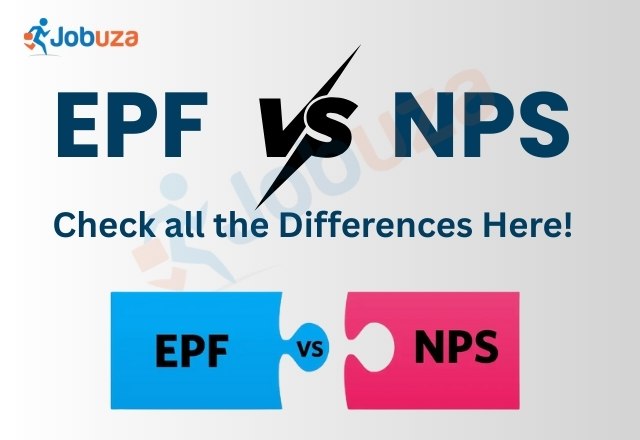EPF vs NPS: Planning for retirement is one of the most important steps in building long-term financial security. In India, the Employees’ Provident Fund (EPF) and the National Pension System (NPS) are two of the most widely used government-backed schemes. Both help individuals save for their future but differ in how they work, who can invest, the type of returns they offer, and their tax benefits.
EPF vs NPS: EPF mainly targets salaried employees in the organised sector, offering fixed and guaranteed returns. NPS is open to all citizens and provides market-linked returns that can grow significantly over the long term. Understanding these differences helps you choose the plan that matches your financial goals.
Meaning and Objective
EPF (Employees’ Provident Fund)
EPF is a retirement savings scheme managed by the Employees’ Provident Fund Organisation. It provides financial security after retirement. Both employees and employers contribute 12 percent of the employee’s basic salary and dearness allowance each month.
NPS (National Pension System)
NPS is a pension scheme regulated by the Pension Fund Regulatory and Development Authority. It encourages long-term savings for retirement and is open to individuals aged 18 to 70.
Eligibility
EPF
Applicable only to salaried employees working in organisations registered under the EPF Act.
NPS
Open to all Indian citizens, including salaried individuals, self-employed professionals, and those working in the unorganised sector.
Type of Returns
EPF
Offers fixed and guaranteed returns declared annually by the government. The interest rate generally stays between 8 to 8.5 percent.
NPS
Provides market-linked returns based on investments in equity, corporate bonds, and government securities. Long-term returns usually range between 9 to 12 percent.
Tax Benefits
EPF
Employee contributions qualify for tax deductions under Section 80C. The interest earned and the final maturity amount are tax-free if the employee has completed five years of service.
NPS
Offers tax benefits under Section 80CCD(1) and an additional deduction of up to fifty thousand rupees under Section 80CCD(1B). At retirement, sixty percent of the corpus is tax-free, while the remaining forty percent must be used to purchase an annuity, and the pension received is taxable.
Risk Factor
EPF
Low risk, as the returns are government-backed and stable.
NPS
Moderate risk due to market-linked returns. Over time, equity exposure can provide higher growth.
Withdrawal Rules
EPF
Allows full withdrawal at retirement or after two months of unemployment. Partial withdrawals are permitted for specific purposes such as education, home purchase, and medical emergencies.
NPS
Allows partial withdrawals of up to twenty-five percent after three years for specific reasons. At retirement, sixty percent of the corpus can be withdrawn, while forty percent must be invested in an annuity plan.
Flexibility
EPF
Less flexible since it is directly linked to an employee’s organisation and cannot be customised.
NPS
Highly flexible with options to choose fund managers, switch investment preferences, and adjust portfolios as needed.
Returns and Growth Potential
EPF
Provides stable returns due to a fixed interest rate.
NPS
Offers higher long-term growth because of equity exposure, making it suitable for investors comfortable with moderate risk.
Conclusion
Both EPF and NPS help build financial stability after retirement, but they meet different needs. EPF is ideal for individuals seeking safety and guaranteed returns. NPS is better for those who prefer higher growth over the long term and can handle market movement. Many people choose to invest in both to balance stability and growth.



